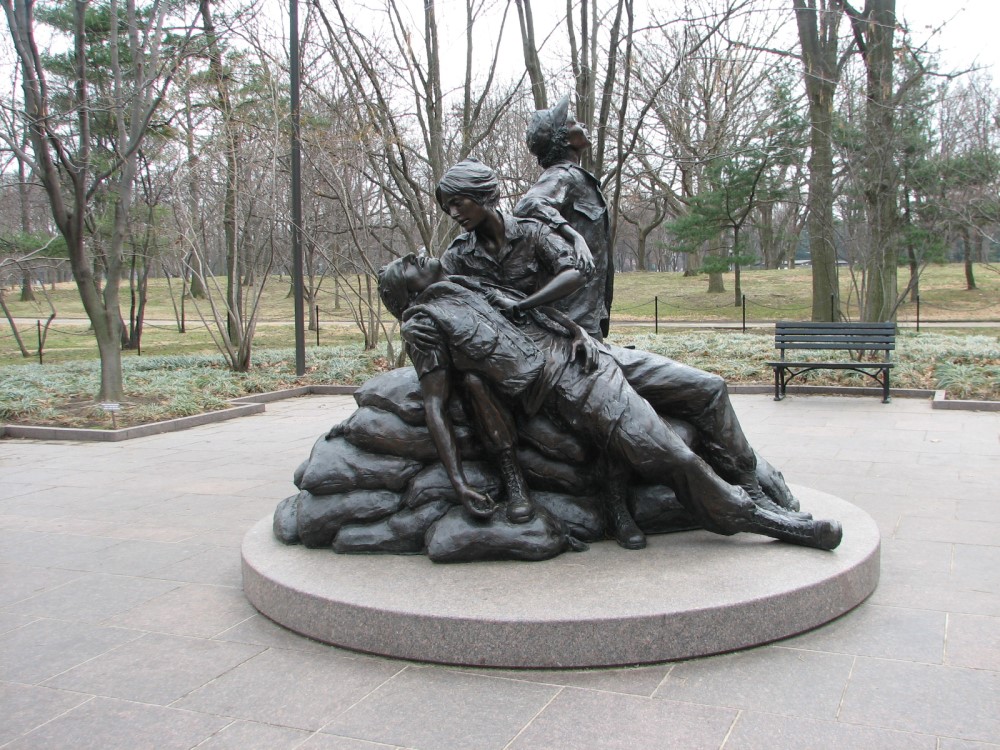On March 29, 2012, President Barack Obama proclaimed March 29 as National Vietnam War Veterans Day. Each year, Vietnam Veterans are honored and thanked in public ceremonies and via media outlets, giving them the thanks and welcome home they did not receive during or after U.S. involvement in Vietnam. What too often goes unsaid during conversations and commemorations about the Vietnam War is recognition of the women who served during that time: the Women Vietnam Era Veterans.
Since the last week of March is Women’s Military History Week, the Center for Women Veterans invites you to explore this piece of military history with us today, on the anniversary of Vietnam Veterans Day.
Fewer than 1.4 percent of all American women, approximately 3,000,000 women since the American Revolution, have ever served in the armed forces, which is less than one percent of the American population. Those of us in that category did so voluntarily. We joined not because we were drafted but because we made a choice to serve and defend our county. Today there are approximately 2,000,000 living women Veterans. Some of us served in peacetime, some during times of conflict. Even in the worst of times, some raised their hands and said, “Send me, I’ll go.”
During the Vietnam War, 265,000 women raised their hands and swore their oath, with nearly 11,000 serving in Vietnam. The majority (close to 90%) were nurses. As the wounded and dying were being flown out to non-conflict locations, the nurses who were stationed in Japan, Guam, the Philippines, Hawaii and stateside hospitals were there providing ongoing care. The remainder served as physicians, physical therapists and other personnel in the Medical Service Corps, as well as air traffic controllers, communications specialists, intelligence officers, clerks and more in the various branches.
Navy women served on hospital ships (the USS Repose and USS Sanctuary), and nurses with the Women’s Army Corps were being sent to Vietnam as early as 1956 to train Vietnamese nurses. Air Force nurses were helping to evacuate the wounded during air evacuation missions. All these women were saving lives, and not necessarily in conditions where they were safely tucked away behind “the front lines” – because there were no front lines.
Women in Vietnam were also wounded and often found themselves in bunkers during attacks. They carried on with their missions, working around the clock to do their best to save lives and repair wounds and injuries, many times in the worst of conditions. Over 58,000 service members died in Vietnam; more than 300,000 were wounded; it was the nurses there who did what they could to provide solace and help for preventing those numbers from climbing higher.
The women who served in Vietnam did not all come home. Eight military women (seven Army nurses and one Air Force flight nurse) died during that war. When we visit the wall or remember those who died in Vietnam, let us remember these women as well. Let us say their names:
- Elanor Grace Alexander.
- 2nd Lt. Pamela Dorothy Donovan.
- 2nd Lt. Carol Ann Elizabeth Drazba.
- Col. Annie Ruth Graham.
- 2nd Lt. Elizabeth Ann Jones.
- 1st Lt. Sharon Ann Lane.
- 1st Lt. Hedwig Diane Orlowski.
- Air Force Capt. Mary Therese Klinker.
Upon their return home, the women of the Vietnam War were subjected to the same hostilities as their brothers. Like their brothers, they also came home with injuries and post-traumatic stress and, later, complications from Agent Orange. Some have committed suicide. Unfortunately, even today, many have not spoken of their service or applied for their benefits and services.
The Center for Women Veterans wants women Vietnam Veterans to know we see you, we thank you for your service and that we honor you. You earned and deserve your benefits and your services, just like your brothers. If you need assistance, please feel free to reach out to our office or to one of the resources listed on our website.
If you would like to learn more about Vietnam Women’s Memorial Project or to participate in their Sister Search program to locate Veteran and civilian women who served during the Vietnam War, please visit the Vietnam Women’s Memorial Foundation website.
Topics in this story
More Stories
This month's Center for Women Veterans Book Corner author is Navy Veteran Kimberly Henry, who served as a Cryptologic Technician and Sexual Assault Victim Advocate from 2009-2019. She created "Warrior's Path to Healing: A 12-Week Empowerment Journal for Women Veterans."
Thinking about building a family or exploring fertility treatments? VA can support you with a wide range of services.
Report examines the input of over 7,000 women Veterans: They are happier with VA health care than ever before.








Thank you for remembering the women who served in Vietnam that were not Nurses. We volunteered to serve there!